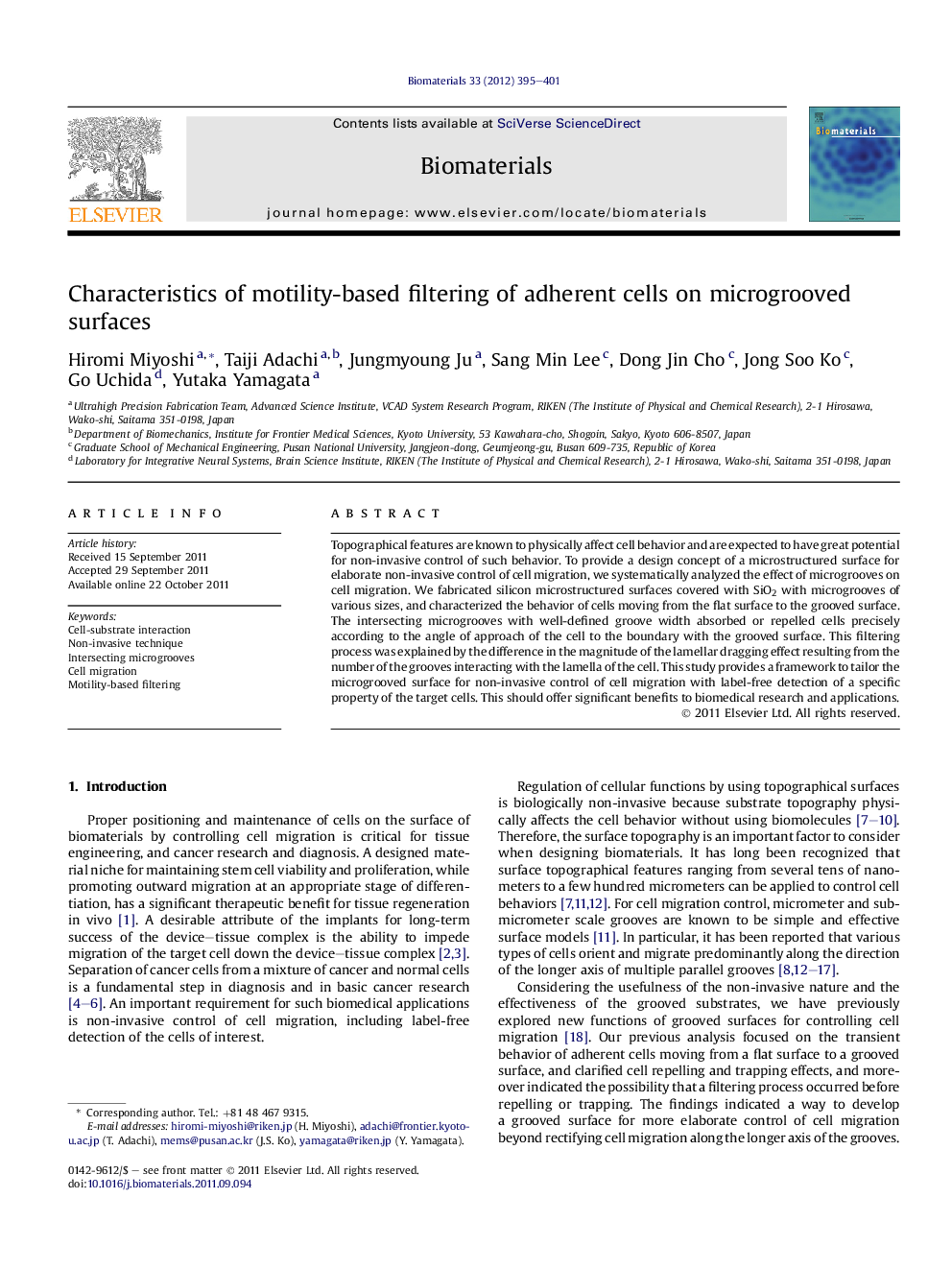| Article ID | Journal | Published Year | Pages | File Type |
|---|---|---|---|---|
| 7605 | Biomaterials | 2012 | 7 Pages |
Topographical features are known to physically affect cell behavior and are expected to have great potential for non-invasive control of such behavior. To provide a design concept of a microstructured surface for elaborate non-invasive control of cell migration, we systematically analyzed the effect of microgrooves on cell migration. We fabricated silicon microstructured surfaces covered with SiO2 with microgrooves of various sizes, and characterized the behavior of cells moving from the flat surface to the grooved surface. The intersecting microgrooves with well-defined groove width absorbed or repelled cells precisely according to the angle of approach of the cell to the boundary with the grooved surface. This filtering process was explained by the difference in the magnitude of the lamellar dragging effect resulting from the number of the grooves interacting with the lamella of the cell. This study provides a framework to tailor the microgrooved surface for non-invasive control of cell migration with label-free detection of a specific property of the target cells. This should offer significant benefits to biomedical research and applications.
